Arguably the wild herb I harvest the most of each year, Wild bee balm (Monarda fistulosa) also known as wild bergamot and wild oregano, is one of the most useful wild herbs every forager in the United States should know.
Most gardeners will know the plant as a wild flower that's good for pollinators, but it's so much more. Today I'll tell you everything I know about finding, identifying, cooking, and using this wild edible herb, as well as its cultivated cousin scarlet bee balm.
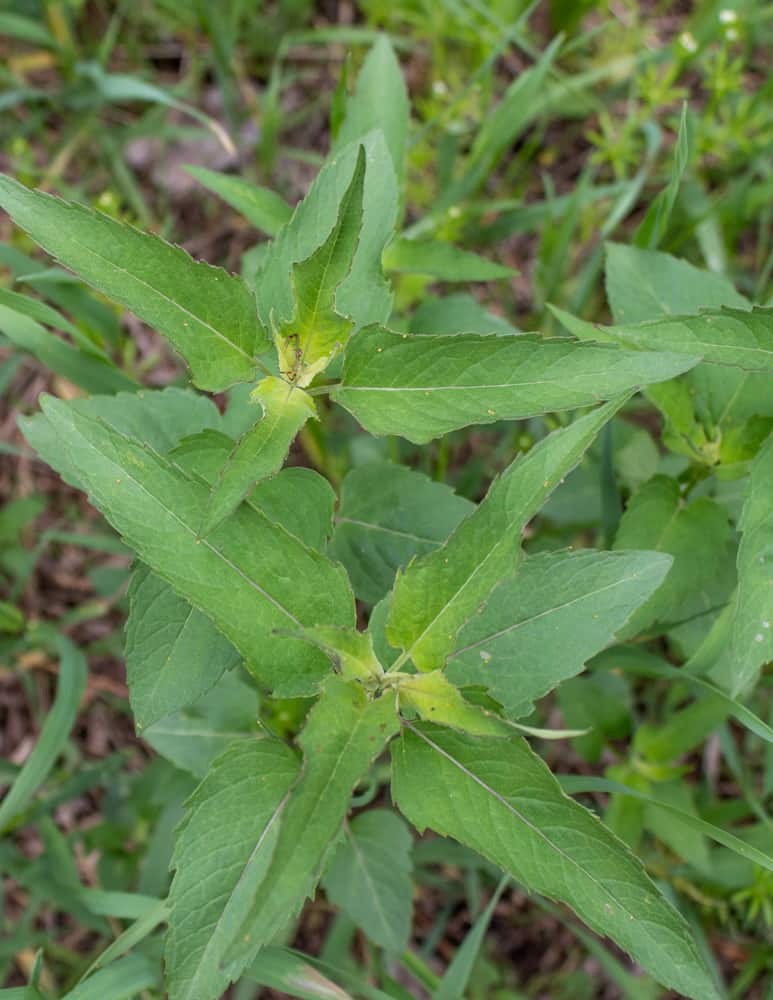
Identification
Bee balm is in the mint family (Lamiaceae). Generally speaking, this means that the plant has a square stem, and usually has very aromatic leaves and edible flowers. Wild bee balm flowers are beautiful, sky blue, and they stick out like a sore-thumb when colonies of the plant are in bloom.
When crushed or bruised, the leaves give off a strong aroma of oregano and thyme, due to the presence of the essential oil thymol in the plant. The thymol, and the aroma it brings, is the biggest reason bee balm is a good culinary herb.
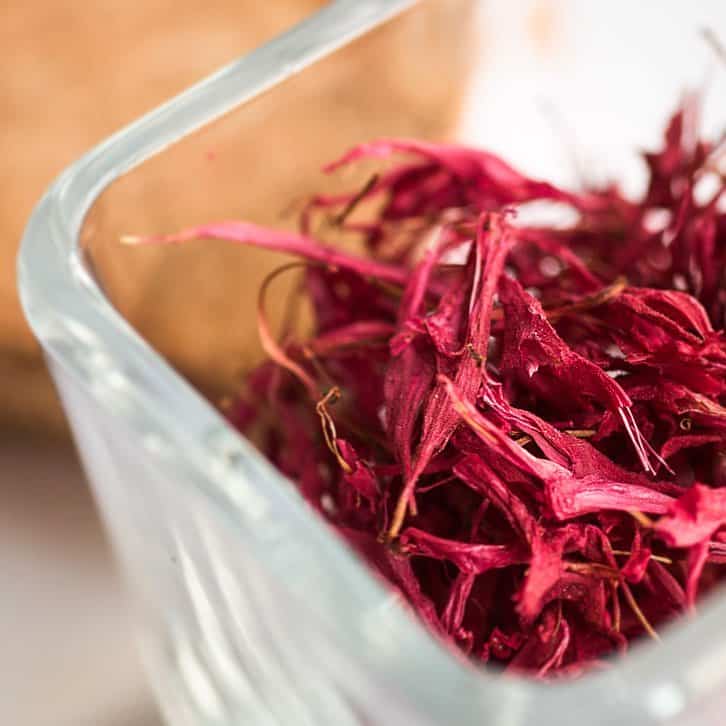
Habitat
Bee balm likes full sun, so it's a common plant of open areas, clearings prairies and the edges of woods.
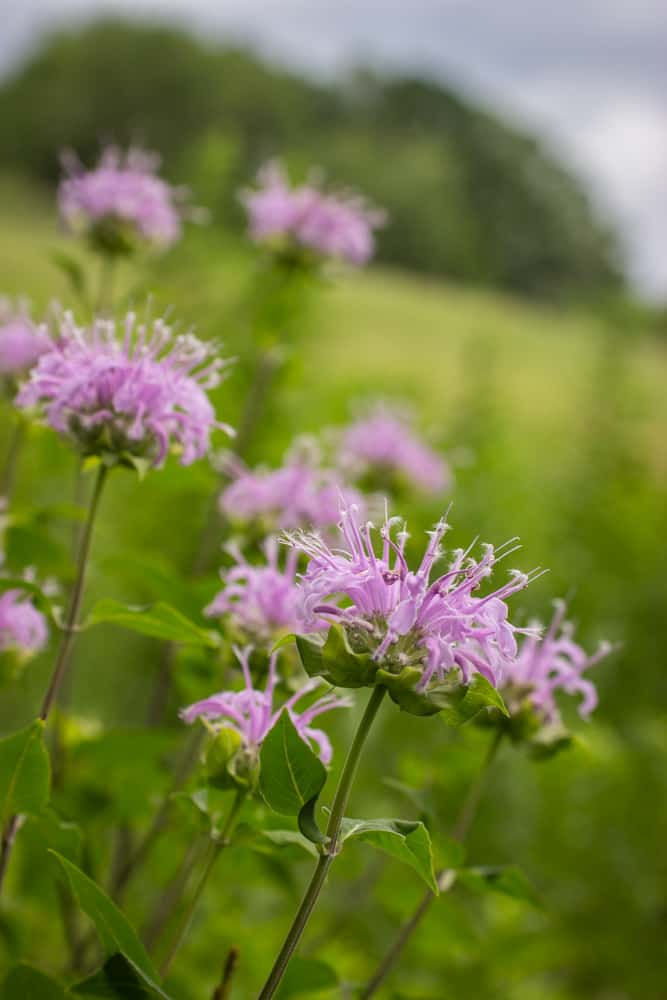
In mid-summer, typically around August in the Midwest where I live, the plant will start to make flowers. Noticing a field of bee balm plants and their purple flowers in bloom is the easiest way to find patches where you can gather greens the next year.
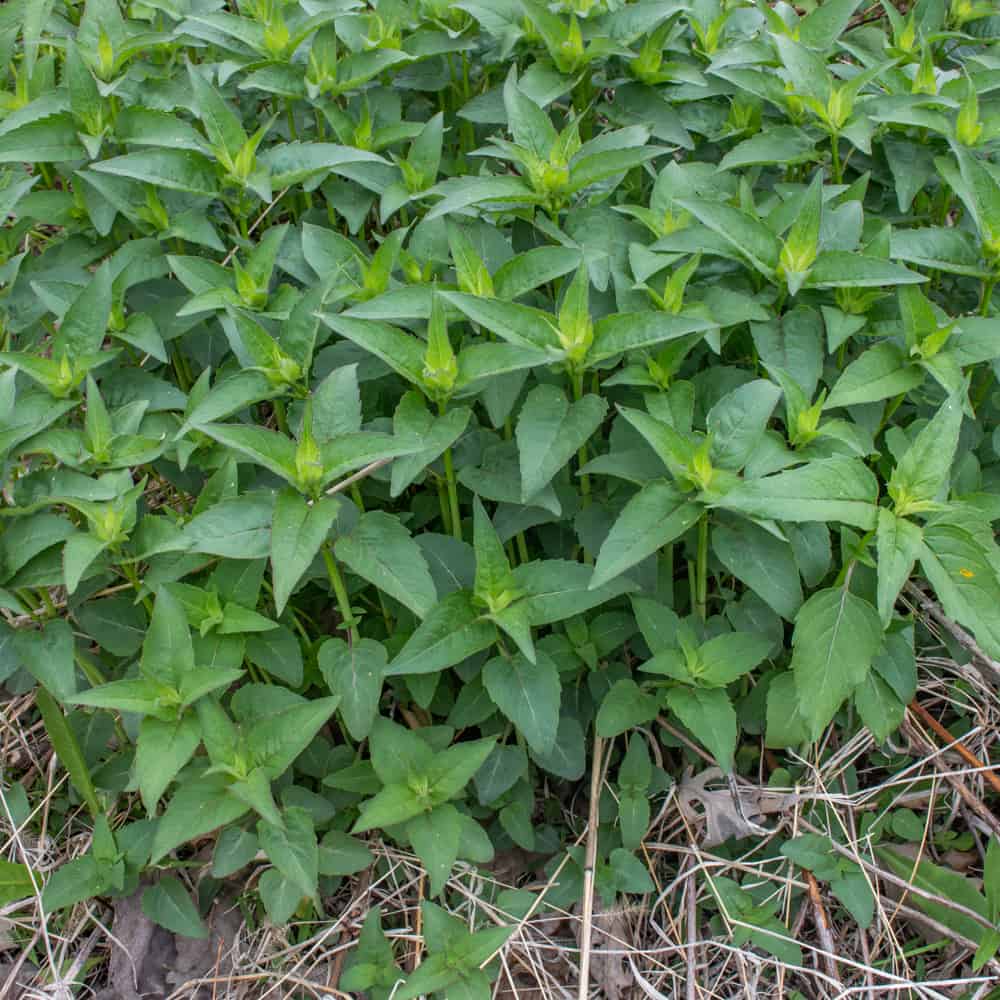
Bee balm growing in very humid places can be prone to powdery mildew, which ruins the leaves for cooking.
Cultivated Varieties (Scarlet Bee Balm)
A common garden plant, Scarlet bee balm (Monarda didyma, also known as Oswego tea) is the variety that most people will know. Scarlet bee balm resembles wild bee balm, but is typically taller
. The most noticeable difference between the wild and cultivated variety are that scarlet bee balm has beautiful carmine-red flowers. The height and showy flowers make it a pretty garden ornamental that's good for pollinators.
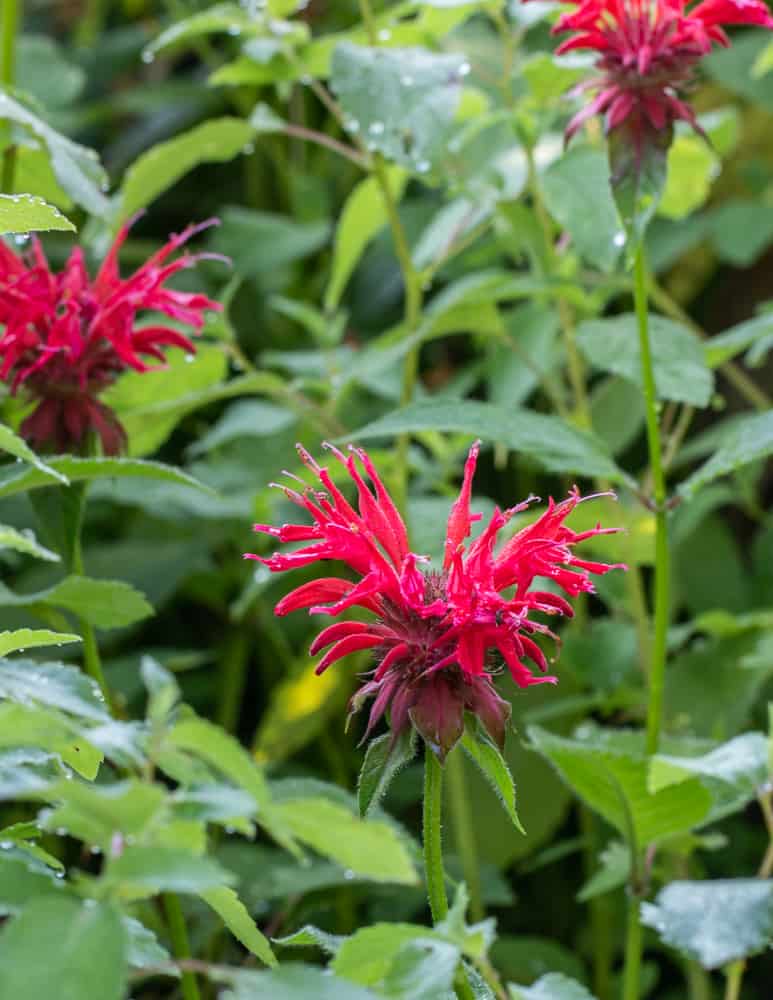
The best part about Scarlet bee balm is the flavor of the flowers. They have the flavor of thymol like wild bee balm, but mixed with notes of ripe red fruit and berries.
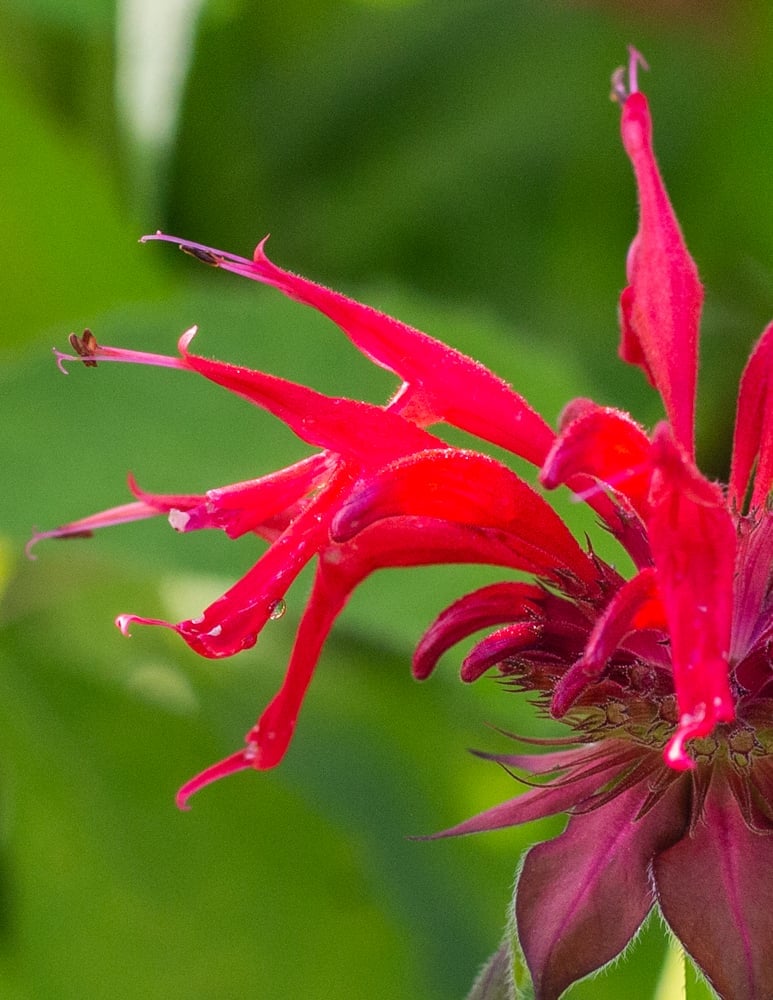
The fresh leaves are wonderful scattered into a salad or sprinkled on just about anything. Mixed with a hot cup of water, the dried flower petals can make a nice tea.
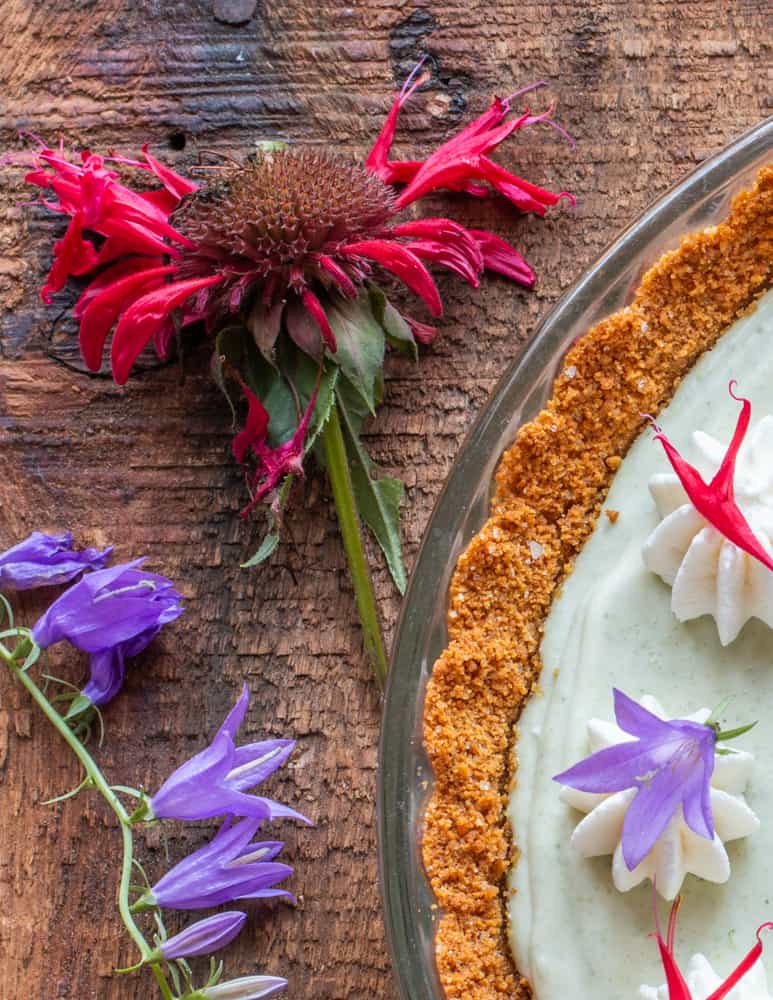
Unlike wild bee balm, I don't use the leaves of scarlet bee balm in cooking-only the flowers. The leaves taste slightly odd to me, and not as pleasant as the leaves of its wild cousin.
How to Harvest Bee Balm
You'll the largest harvest of high quality leaves if you gather the plant before it goes to flower. As the flowers bloom, the plant gets taller, the stems get more rigid, and the leaves are less concentrated on the plant. I look for large colonies of plants about a 1-2 feet tall, and using a scissors, I cut the top 6 inches or so off and put them in a paper bag.
When I get home, I put transfer the plants to a plastic bag and store in the fridge. You must cool down the plants after harvesting within a few hours or they will wilt and discolor, which can ruin the flavor.
If you bring your plants home and they're wilted from travel, soak them in a bowl of cold water for 20 minutes, or until they become perky again, then spin dry and store in a zip-top bag wrapped in paper towels. Freshly picked and quickly cooled, fresh bee balm leaves will keep in the fridge for at least a week.
Cooking
This is an incredibly versatile wild herb with many more uses than bee balm tea. The thymol means that it's a great substitute anywhere you'd use oregano or thyme. Some people (myself included) have started to refer to wild bergamot as "pizza plant" because it pairs so well with tomatoes, especially tomato sauce.
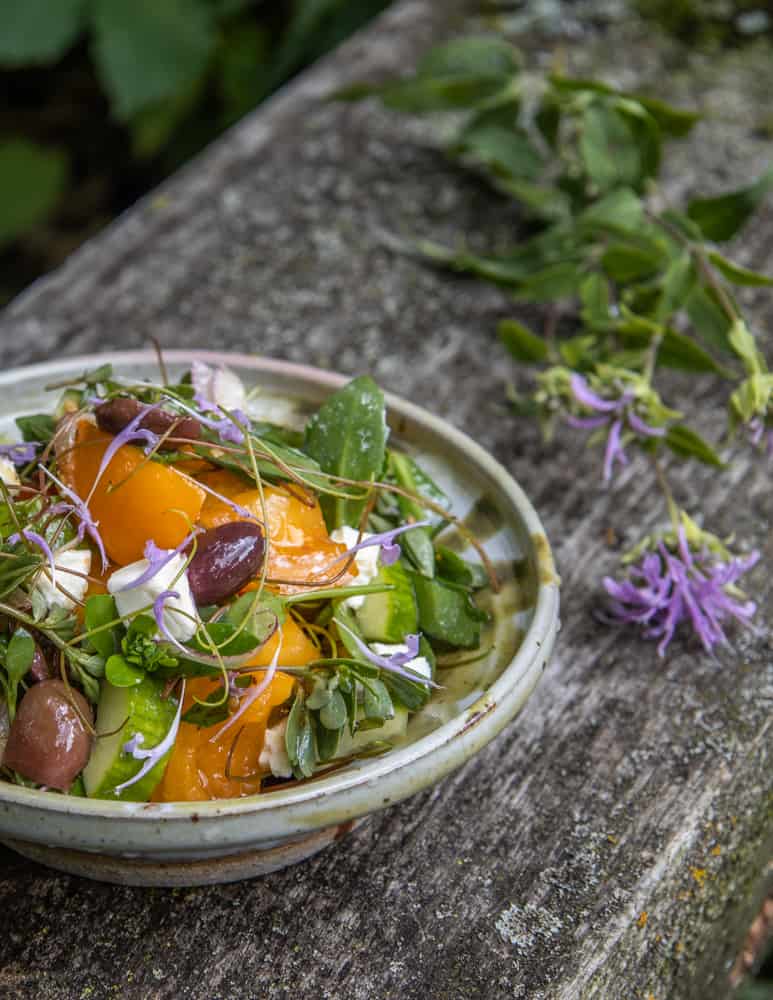
There's two ways you can use bee balm leaves and flowers in cooking: fresh, and dried.
Fresh
The fresh green leaves of the plant add a great flavor to sauces, especially tomato sauces, soups, marinades and vinaigrettes, and basically anywhere you'd use fresh oregano or thyme. Fresh, I use the leaves to make salmoriglio sauce. It's one of my favorite things to do with the plant.
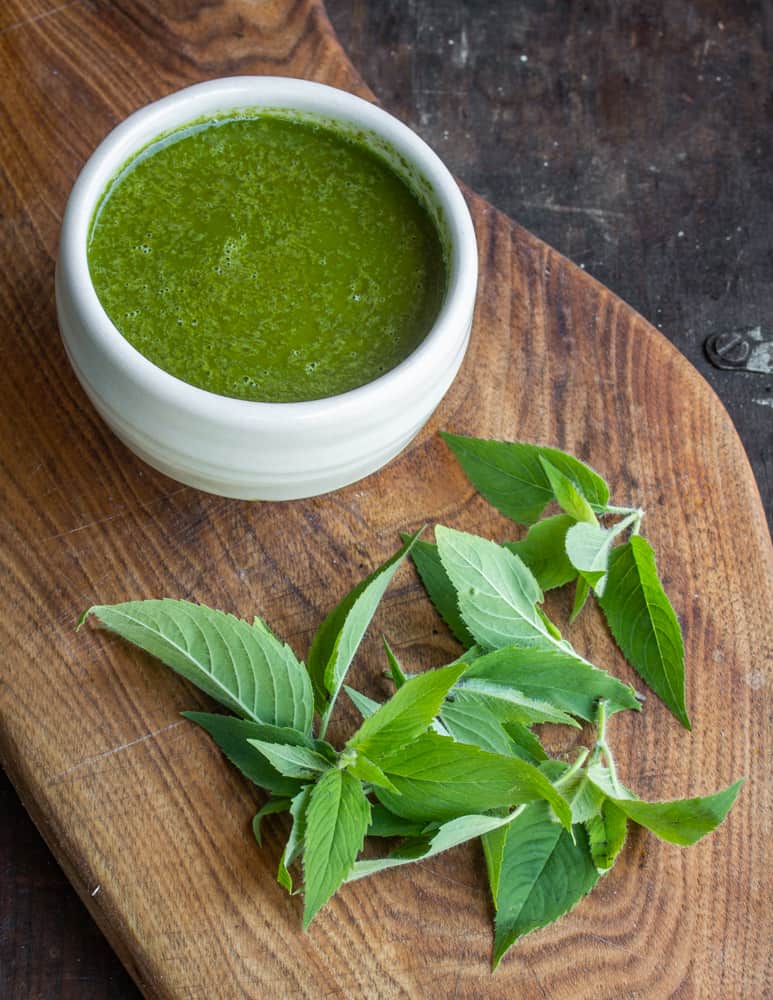
Bee balm flowers will lost some of their power after drying, so I typically use them fresh only, although they can be ok for tea.
Dried
The fact that bee balm can be harvested easily in large quantities, dry well and keep a great flavor, makes it of my favorite foraged herbs to cook with.
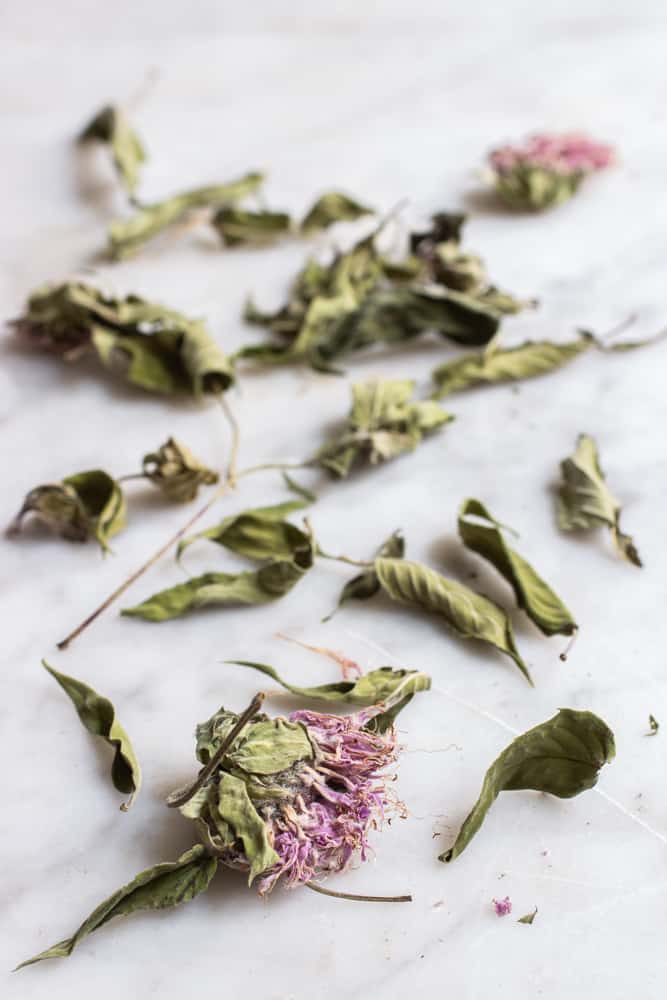
Just like the fresh plant, you can use the dried leaves anywhere you'd use dried oregano or thyme.
Cooking Suggestions
You can use dried bee balm anywhere you would use dried oregano, but some recipes and methods are better than others. Here's a few ideas I've tried, and some that are on the list:
- Add dried bergamot to all-purpose tomato or pizza sauce.
- The dried leaves are great added to bread doughs a pastries.
- Mixed sliced fresh leaves or flowers into potato salad.
- They leaves are great chopped and used tossed with grilled vegetables like zucchini
- Blanch some diced eggplant in salted water, then bake in the tomato-bergamot sauce with cheese for an excellent side dish.
- Use dried bergamot, lemon zest, crushed garlic cloves and olive oil to marinate chicken, pork or fish
- Fresh bergamot leaves have a strong flavor, but can be used with a little technique, see my recipe for salmoriglio sauce below for my favorite recipe
- Fresh scarlet beebalm leaves are wonderful with red fruit, especially raspberries and strawberries. Sprinkle a few over some macerated strawberries on top of a panna cotta, or soft cheese.
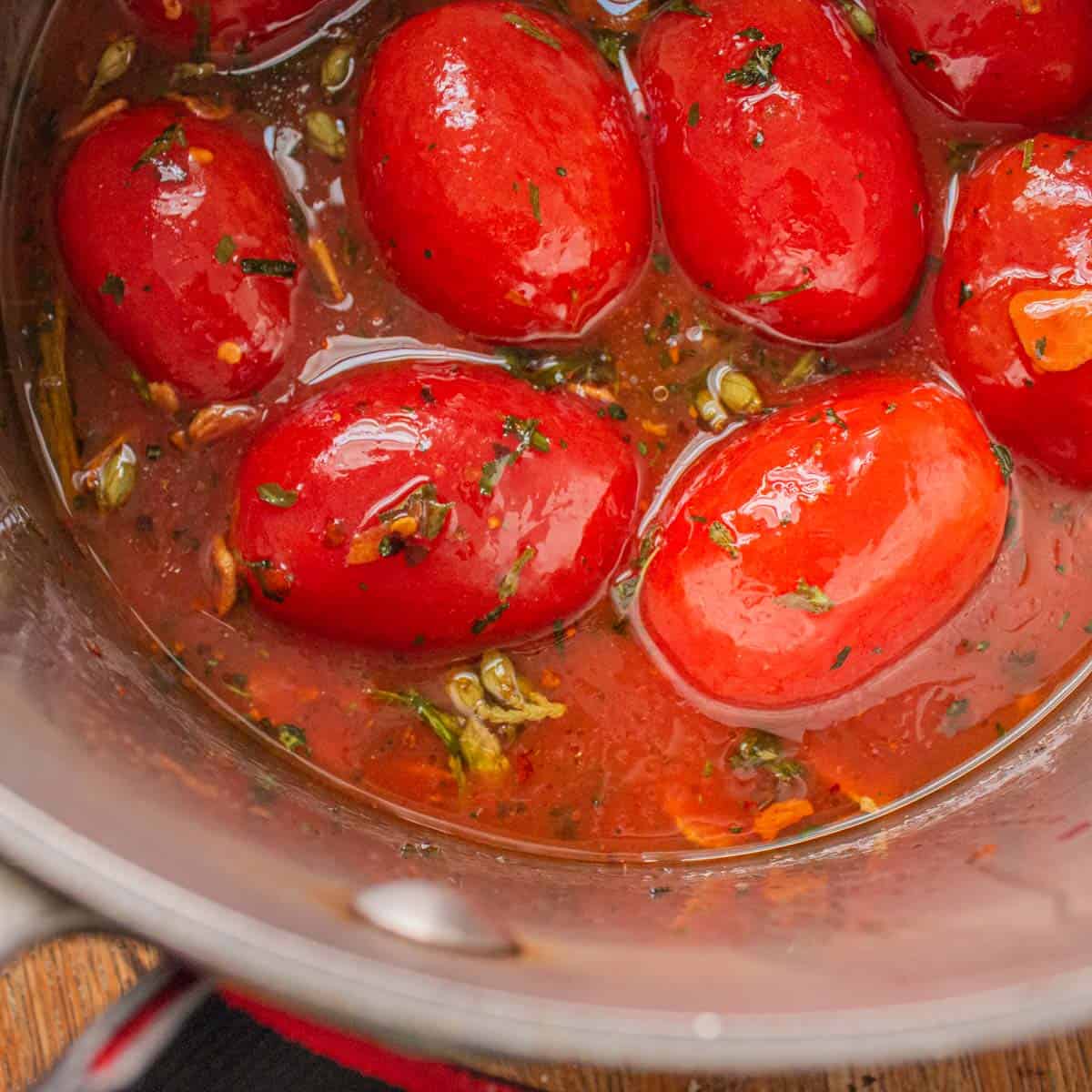
How to Dry Bee Balm
To dry the plant for use as an herb, I harvest the whole stems of the plant, typically the tender tops. You can harvest bee balm greens when the plant is older and taller too, tying them up and hanging them to dry in the sun as illustrated below.
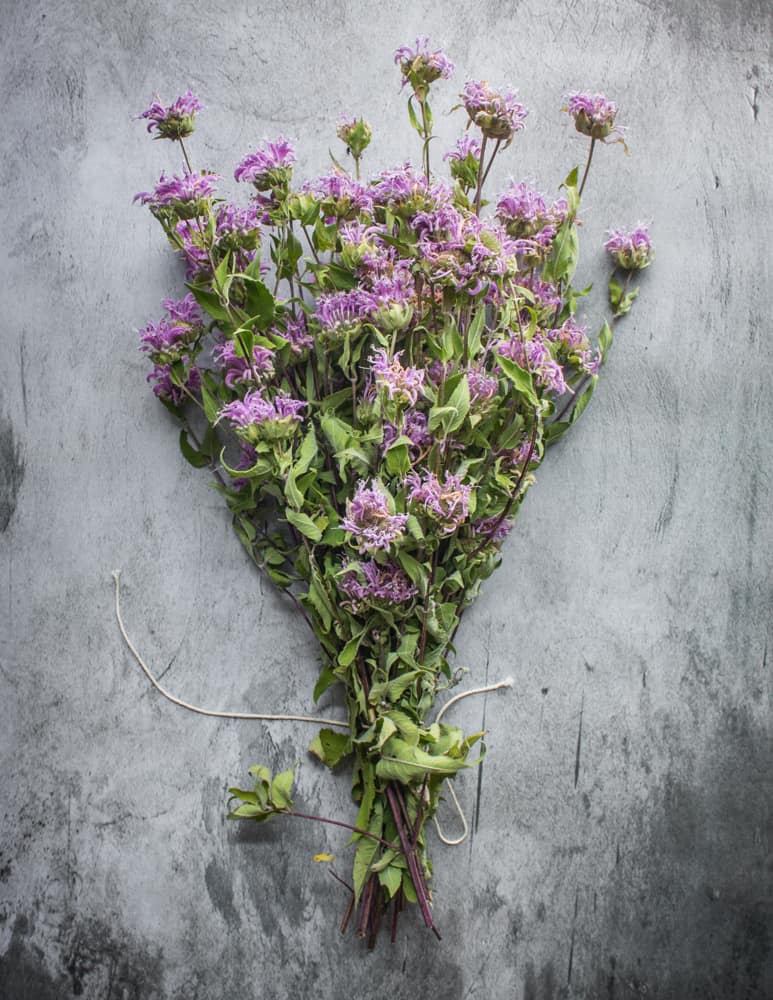
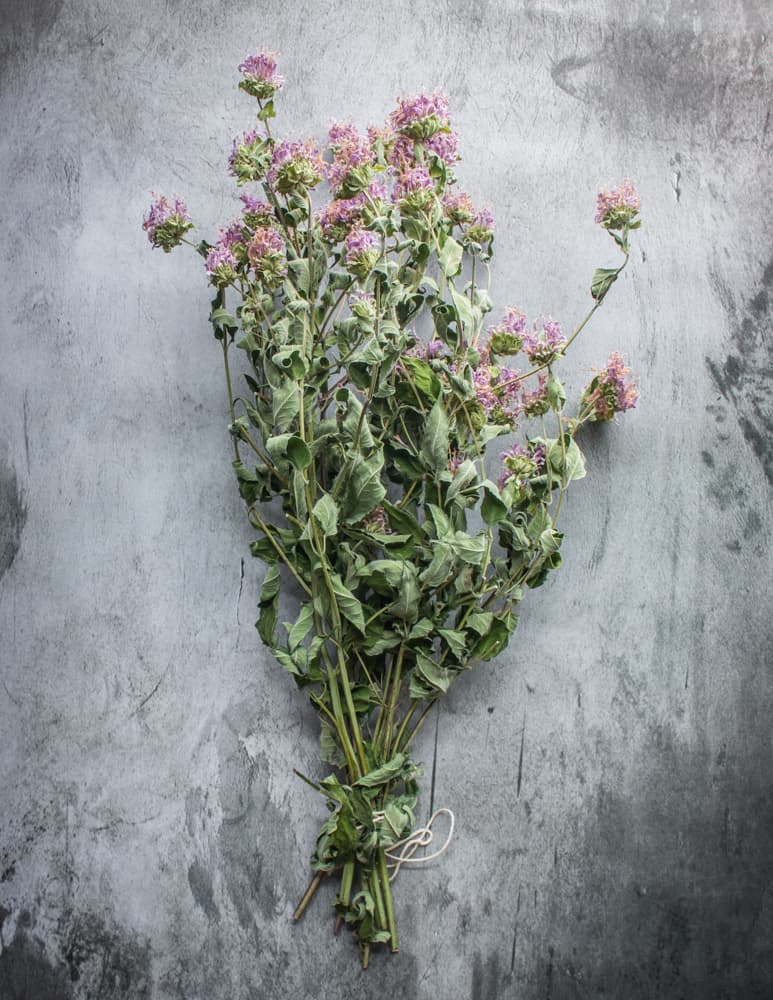
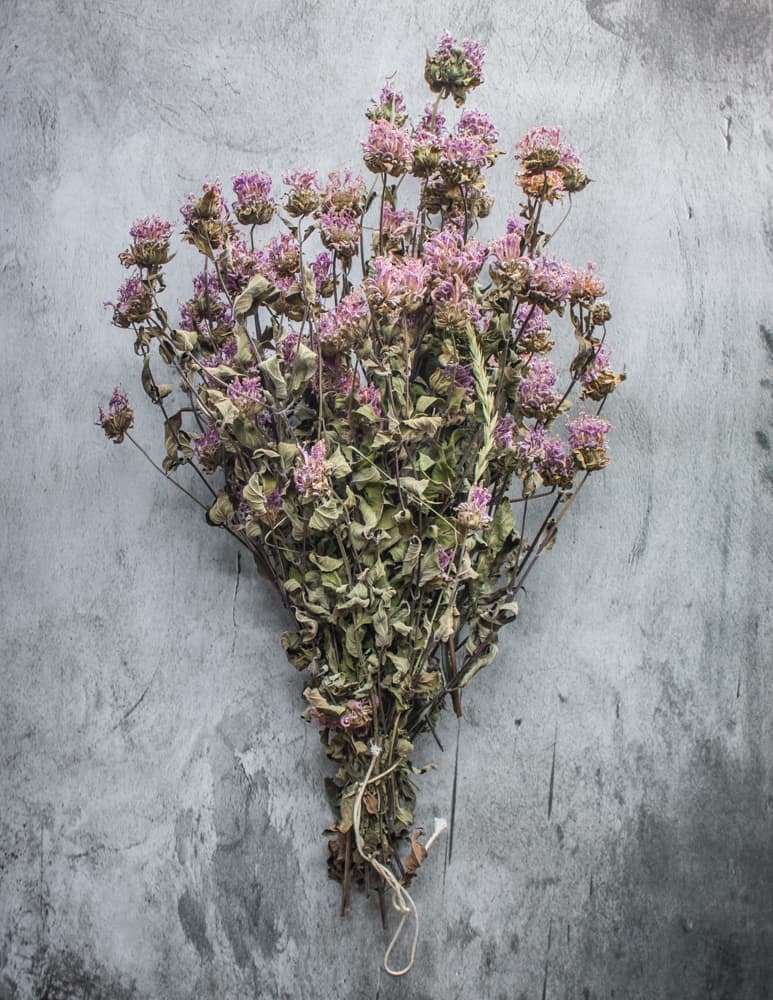
If I harvest young plants I put the leaves, stems in a dehydrator and dry at 100 F or on the "herb" setting for twelve hours or until the leaves are brittle and fully dried. If it's very humid where you live, you'll want to dry your leaves at a higher temperature (130 F) to make sure you can crumble them after drying.
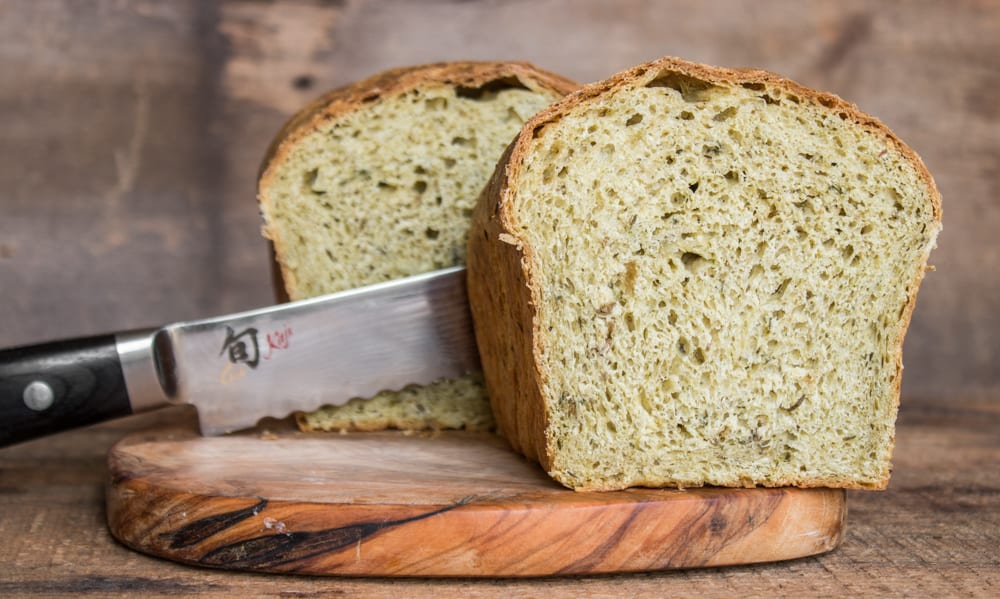
Once the leaves and stems are dried, I put them in a spice jar. Finished, dried bee balm leaves can be stored in a pantry like any other herb.
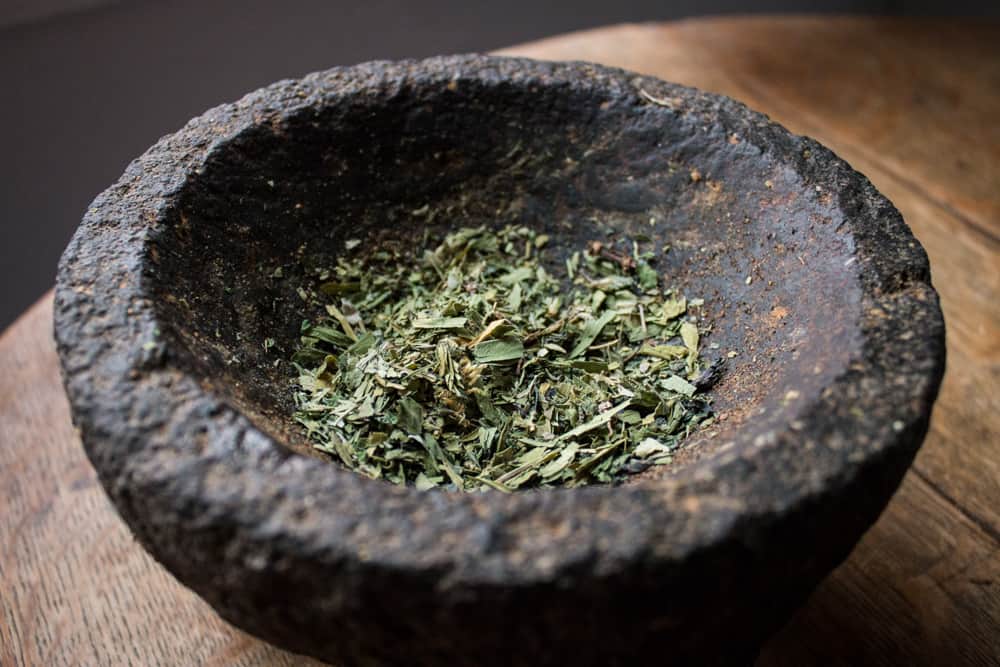
It's good to not crumble the leaves up too much before storing. Just like dried oregano, crumbling the dried herb between your fingers helps to release the thymol when you cook with it. Before adding bee balm to a dish, you'll want to crumble it and remove any tough stems. If you want to do this in advance, you'll want to store your dried leaves in the fridge to keep the best flavor.
Bee Balm Recipes
Oven-Dried Tomatoes with Bee Balm and Ramp Leaves

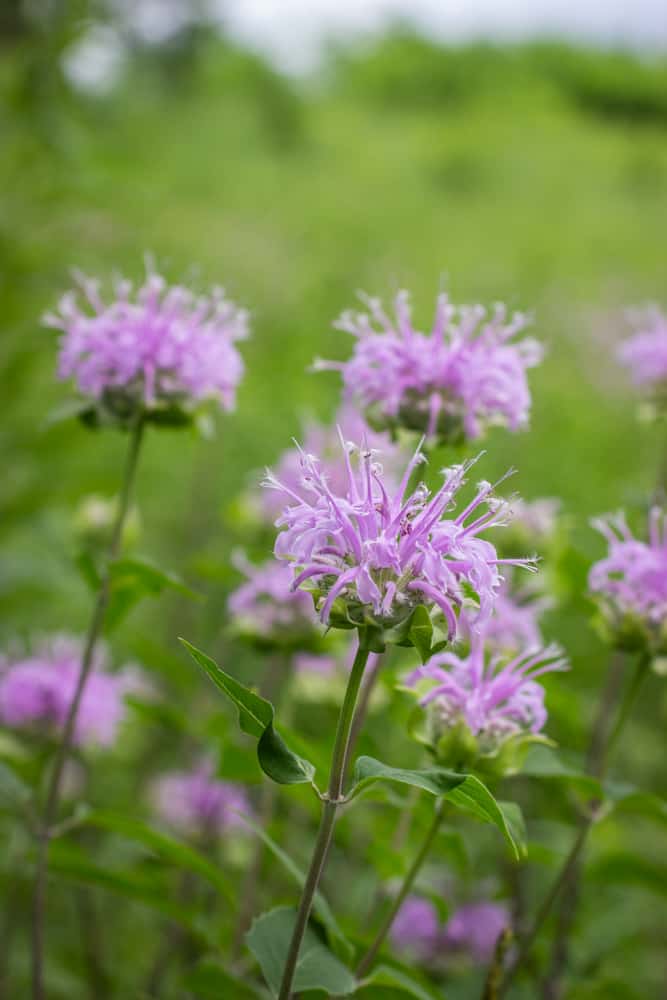
Sylvie
Alan: I am a lot more familiar with the medicinal uses of Wild Bergamot (anti-bacterial & fungal; decongestant etc such a precious herb to have during cold season), so it's very enlightening to see culinary uses, all nicely summarized in one place. I made the Bergamot Salmoriglio Sauce last summer - delicious (thank you!), so I look forward to trying some of your other suggestions.
Alan Bergo
Thanks Sylvie.
SB
You eat the leaves of the cultivated scarlet fresh in salads but don't cook with them because they have an odd taste? So the scarlet doesn't really function like the wild variety as a pizza herb, right?
Alan Bergo
I eat the pink or purple flower petals-they taste way better than the leaves-try them. And, yes, scarlet bee balm leaves doesn't function like wild bee balm in the kitchen.
Dee
Thank you so much for this lovely detailed description on what you do with bergamot. We have so much wild Bergamont on our property and I have been waiting in anticipation for this year’s bergamot to come up! I appreciate your sharing this!
Alan Bergo
Thanks Dee.
Jay
Hello Alan,
Can I assume that drying bee balm punches up the flavor much as it does with oregano or mushrooms? If so, I have even more experimentation to do this spring.
-- jay
Alan Bergo
Oh yes. It will act like all the rest of our square-stemmed friends.
Derek S
Hi from London
What an excellent post, thank you for sharing. I enjoy cooking with Monarda (the cultivated, red variety, M didyma) and have used it to make tea (flowers and leaves); as a fresh herb in casseroles (leaves); with scrambled eggs (leaves or flowers) and more. It is delicious - one wonders why it isn't used a lot more than seems the case here in England. Also a pleasure to grow it as the insects love the flowers, as one of its names implies.
Alan Bergo
Yes it's a great plant. Thanks for sharing Derek, and howdy from Wisconsin.
Tina
Hello John,
I have wild bergamot growing in my backyard hills here in Alberta Canada. I found their smell so similar to oregano when I discovered them one summer and have since used them in cooking any dish I would use oregano in. Needless to say the flavour I get in my food is soo delicious that I will never go back to buying oregano spice from a grocery shelf. The flavour is so good and I have already got my family asking me for more of my dried oregano each time they come for a visit 🙂 thank you for sharing your recipes I can't wait to try and make salmoriglio with my fresh harvest this year! Cheers!
Tina
Hello Alan*** not John my post got the wrong name
Alan Bergo
Thanks Tina, yes, this is such a good plant!
John
Hi - I am a little confused about your terminology of Wild Bergamot and Wild Oregano. (I apologize for being nerdy, but I am trying to do some research). I have not found anything else on the web that points to Wild Bergamot, or Monarda fistulosa being referred to as Wild Oregano. You seem to use the terms interchangeably. Would you mind clarifying for me? Thanks!
Alan Bergo
Hi John. I do use the terms interchangeably because across the United States, Monarda fistulosa is regularly described with the common names wild oregano, or wild bee balm. Another term used on a smaller scale is "pizza spice, or pizza herb". Have you ever smelled this plant? If so, I would wonder why you would be questioning my use of the terms here, as the aroma is unmistakable. A lot of cousins have aromas that are very similar, and heavy on the thyme fragrance, some have fruity notes like Monarda didyma. If you're not seeing anything online regarding the colloquial names, it's probably because a lot of the literature that refers to the plant as such is published in foraging guides that aren't online.
Julie S
Hi there Alan, I love this article on the culinary use of Monarda! I’m so excited to try your suggestions. I wanted to clarify for folks that the scarlet bee balm (Monarda didyma) grows wild in New England and the Appalachians, but it is sold as an ornamental elsewhere in the United States.
aaron fox
Wild or Scarlet Bee Balm makes a lovely tea. Add mint and chamomile flowers and it is reminiscent if sleepytime tea. The grassy part if lemongrass is a nice addition as well. Dryong the flowers petals separately and layering them in a jar is a nice gift - very pretty!